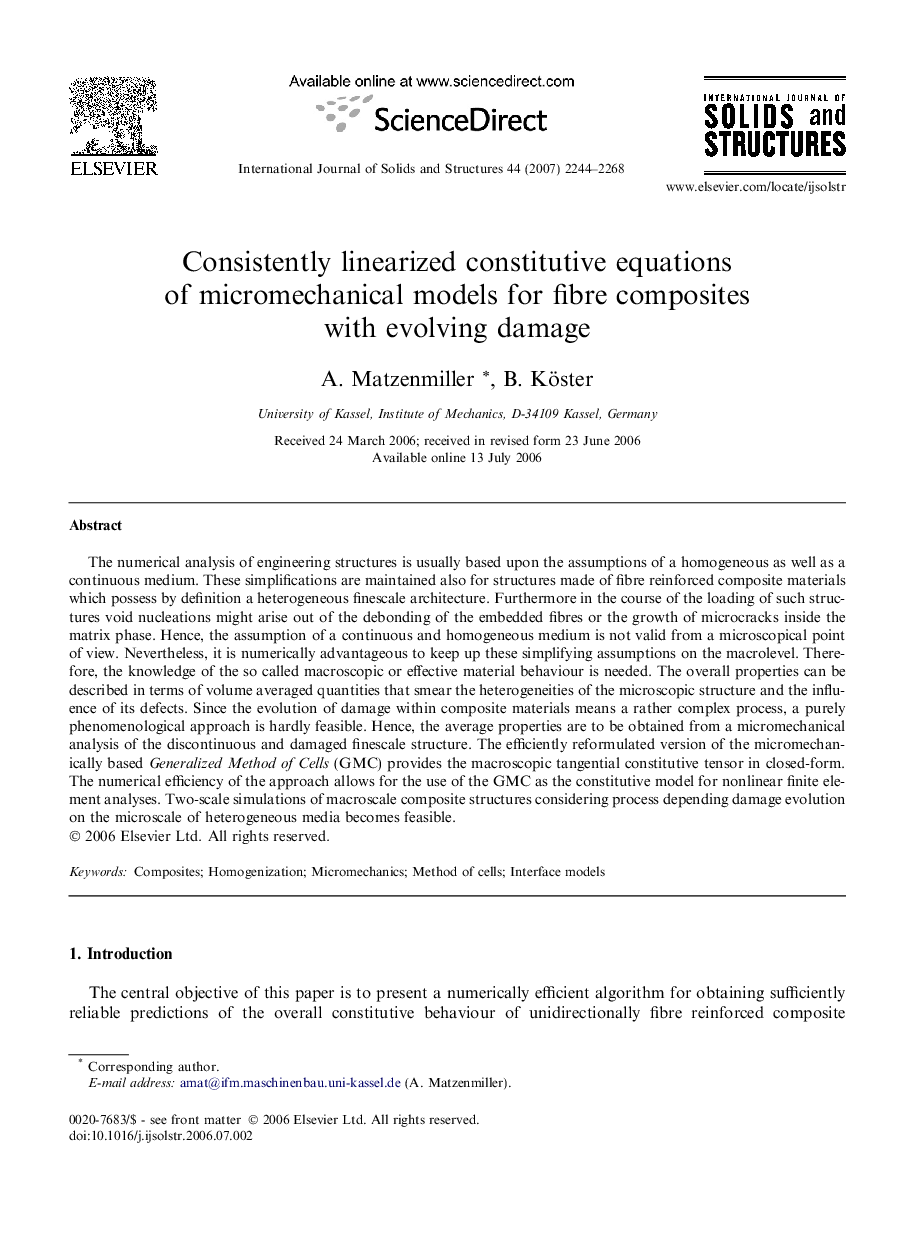| Article ID | Journal | Published Year | Pages | File Type |
|---|---|---|---|---|
| 279905 | International Journal of Solids and Structures | 2007 | 25 Pages |
The numerical analysis of engineering structures is usually based upon the assumptions of a homogeneous as well as a continuous medium. These simplifications are maintained also for structures made of fibre reinforced composite materials which possess by definition a heterogeneous finescale architecture. Furthermore in the course of the loading of such structures void nucleations might arise out of the debonding of the embedded fibres or the growth of microcracks inside the matrix phase. Hence, the assumption of a continuous and homogeneous medium is not valid from a microscopical point of view. Nevertheless, it is numerically advantageous to keep up these simplifying assumptions on the macrolevel. Therefore, the knowledge of the so called macroscopic or effective material behaviour is needed. The overall properties can be described in terms of volume averaged quantities that smear the heterogeneities of the microscopic structure and the influence of its defects. Since the evolution of damage within composite materials means a rather complex process, a purely phenomenological approach is hardly feasible. Hence, the average properties are to be obtained from a micromechanical analysis of the discontinuous and damaged finescale structure. The efficiently reformulated version of the micromechanically based Generalized Method of Cells (GMC) provides the macroscopic tangential constitutive tensor in closed-form. The numerical efficiency of the approach allows for the use of the GMC as the constitutive model for nonlinear finite element analyses. Two-scale simulations of macroscale composite structures considering process depending damage evolution on the microscale of heterogeneous media becomes feasible.
